‘Signs' of a Shift Toward Red Panda Stewardship
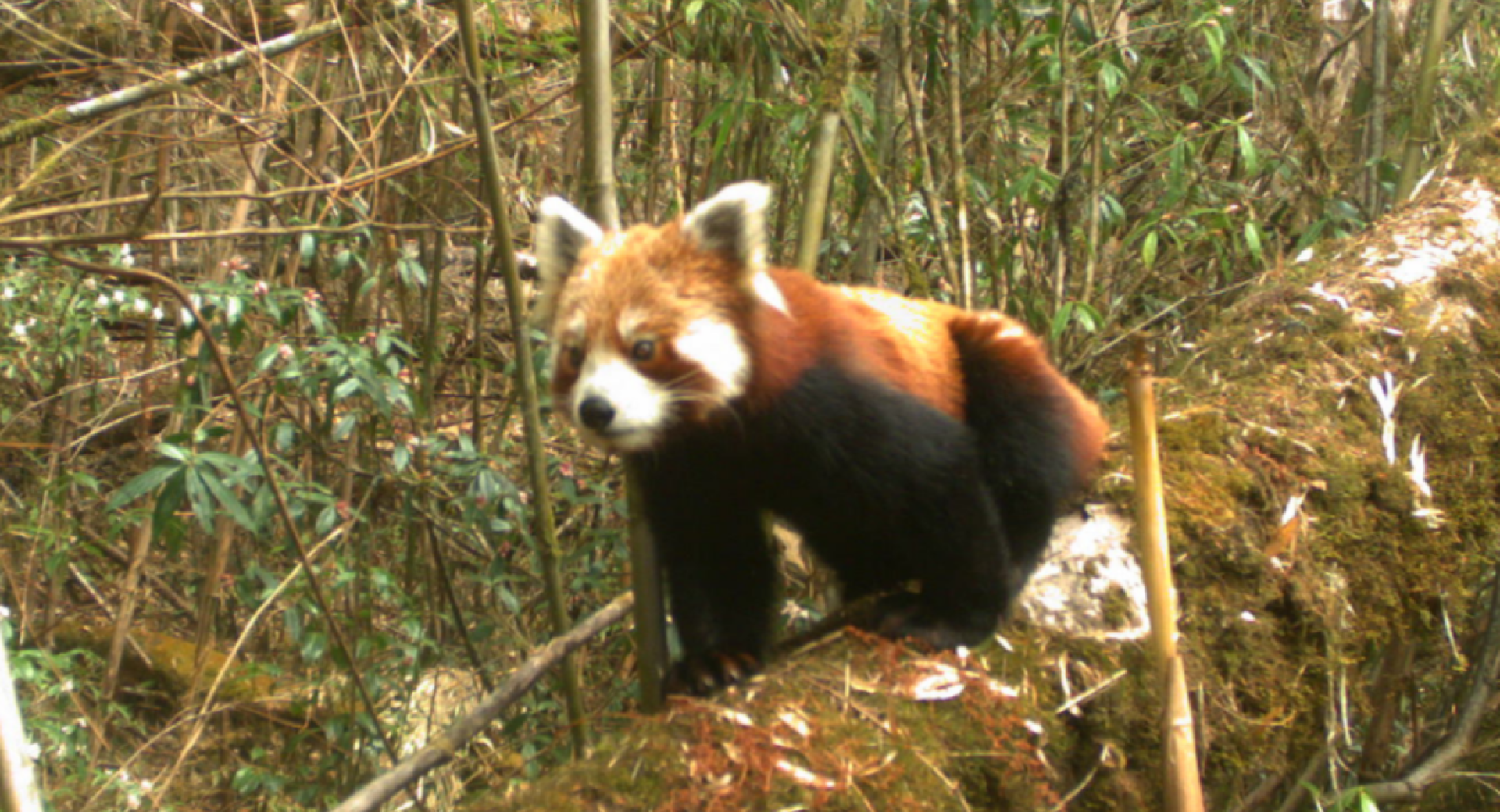
Education is power and conservation billboards are providing local people with important information to safeguard the first panda.
The Pathibhara Devi temple is a renowned religious site located in eastern Nepal’s Taplejung district. The route to the temple passes through high-mountain forests of the Himalayan ecoregion: prime habitat for red pandas. Plentiful foraging spots and water sources near the Pathibhara roadside make this area appealing to local wildlife, including red pandas.
“One fine day, while I was driving to Pathibhara temple with passengers, we saw a glimpse of a small reddish animal crossing the road. Shortly thereafter, a series of billboards with a picture of the same elusive animal caught our attention. Thanks to those billboards, we learned about the endangered red panda. Now we always make a conscious decision of slowing down our vehicle and honking our horn while traveling through red panda habitat,” said Purna BK, a jeep driver, who makes multiple trips to Pathibhara temple every year.
A red panda crossing a newly constructed road in Olangchung Gola, Taplejung © RPN/Tseten Tashi Sherpa.

Red panda crossing Pathibhara road. © RPN/Ramesh Rai
Every year thousands of people visit the Pathibhara temple on foot and by vehicle. There is a high risk of wildlife-vehicle collisions due to the concentrated movement of people and wild animals along the roadway in this area. Informed drivers who are conservation-minded will reduce the frequency of accidents.
“The destruction of natural habitats poses dire threats to wildlife survival. So, it is crucial for everyone, not just native communities, to understand and act responsibly to safeguard the forest and biodiversity of an area. Billboards are a powerful way to attract the attention of people while educating them on the importance of conservation.” Ramesh Rai, Program Coordinator of Himali Conservation Forum – a local conservation partner – expressed passionately.
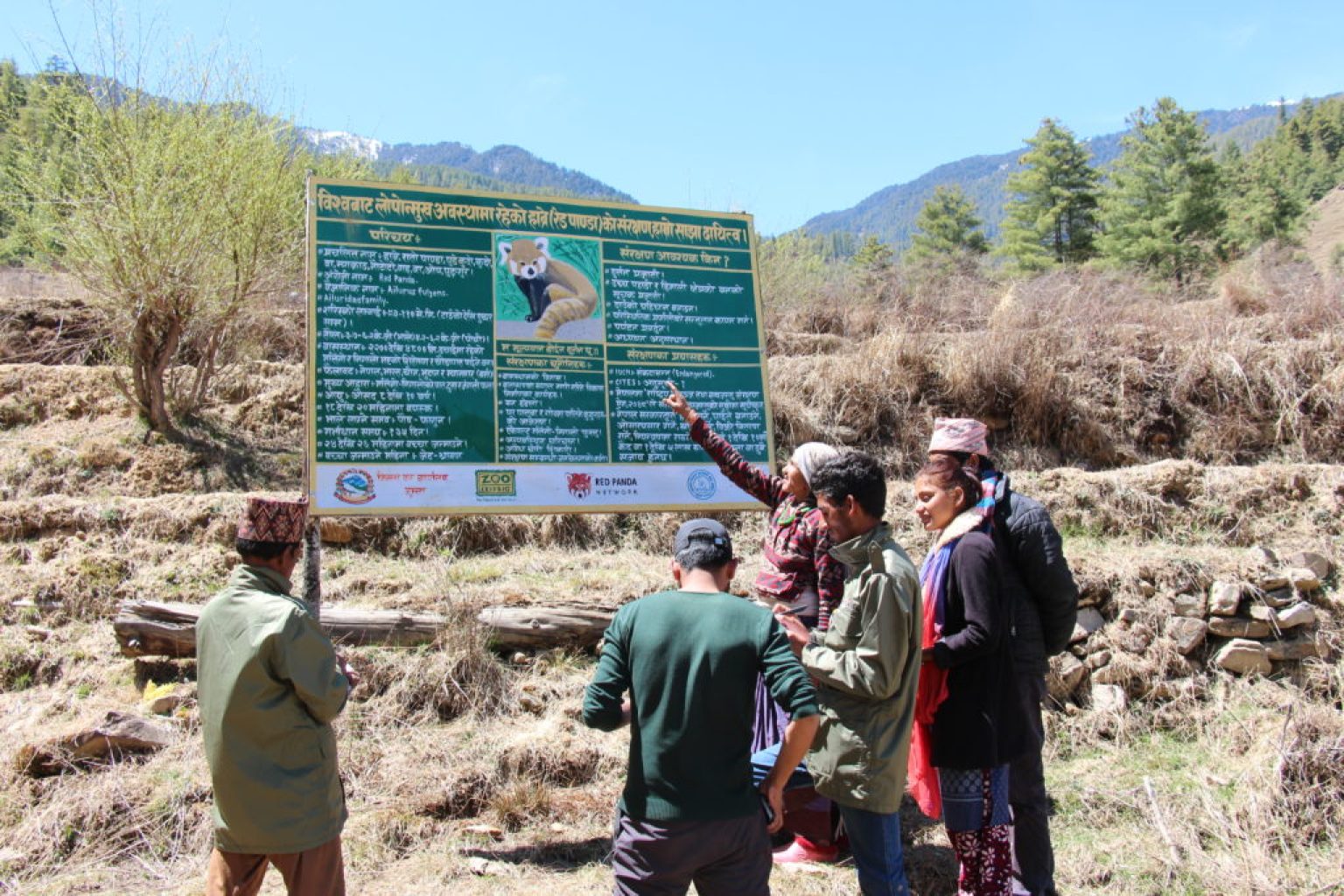
Visitors pointing to conservation board.
Although legally protected in all its range states, the prevailing threats of deforestation – leading to habitat loss, fragmentation and degradation; illegal poaching, and trade of its pelts; as well as overgrazing and free-roaming dog attacks, are compromising the survival of wild red panda populations. This perilous situation for red pandas has been exacerbated by covid-19 lockdowns which are contributing to poverty among local communities and restricting the movement and monitoring capacity of enforcement agencies.
Red Panda Network’s (RPN) anti-poaching investigation and monitoring efforts show that twenty red panda pelts have already been confiscated by Nepal authorities in 2021. Other research suggests that the majority of incarcerated offenders are unaware of the importance of wildlife conservation as well the risks (fine, imprisonment, etc) of illicit wildlife poaching and trade. This discovery reveals that it is critical, now, more than ever, to reach red panda range communities with education and conservation programs.
RPN is raising red panda awareness among local communities in Nepal and around the globe through education and outreach initiatives. Billboards that display conservation messages have become a powerful medium to disseminate important information that encourages red panda stewardship.
To date, we have installed 154 conservation billboards in eastern and western Nepal with twenty-seven billboards installed in western Nepal’s Jajarkot, Kalikot, Rukum, Jumla, and Dolpa districts so far this year.
The billboard messaging focuses on red panda biology and ecology, threats to population viability, conservation importance, and RPN’s efforts to protect them. The threat of poaching and illegal trade is emphasized in the billboard content which includes information on laws that protect wildlife, as well as penalties and punishment for illegal hunting/poaching, trafficking, and trade of red panda and other wildlife.
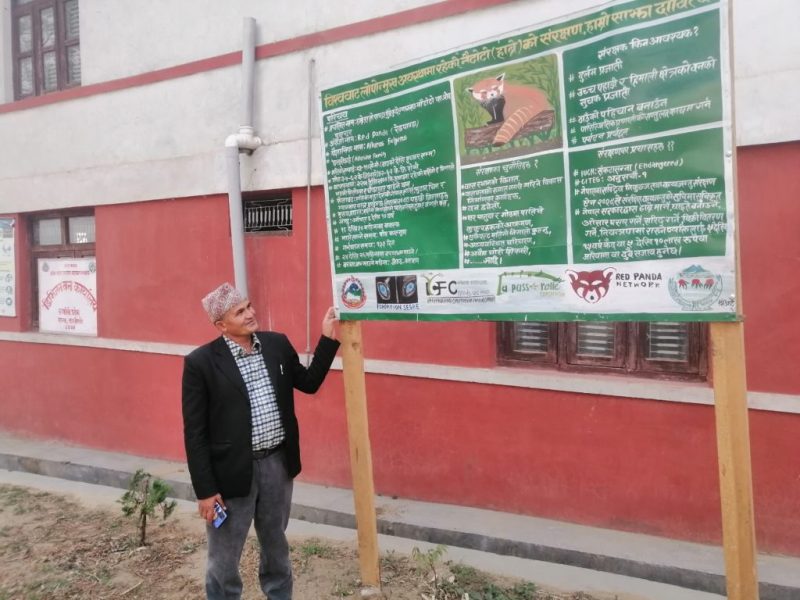
“Following consultation with local council members and native communities, backed by field verification, we carefully choose a location for the conservation billboards that are visible and repeatedly observed by people”, explained Sunil Bantawa, Chief Executive Officer of Shree Deep Jyoti Youth Club – our local partner organization in Panchthar district.
The billboards convey the conservation message through a combination of text and pictures. They are installed in close proximity to red panda habitat in areas with high human population density and traffic. We also display smaller signs inside or near core red panda habitat — including eight boards in Rukum and Jumla districts so far this year — that alert pedestrians and drivers about the presence of red panda (and other endangered wildlife) and implore visitors to be cautious and keep disturbance to a minimum in order to preserve local biodiversity.
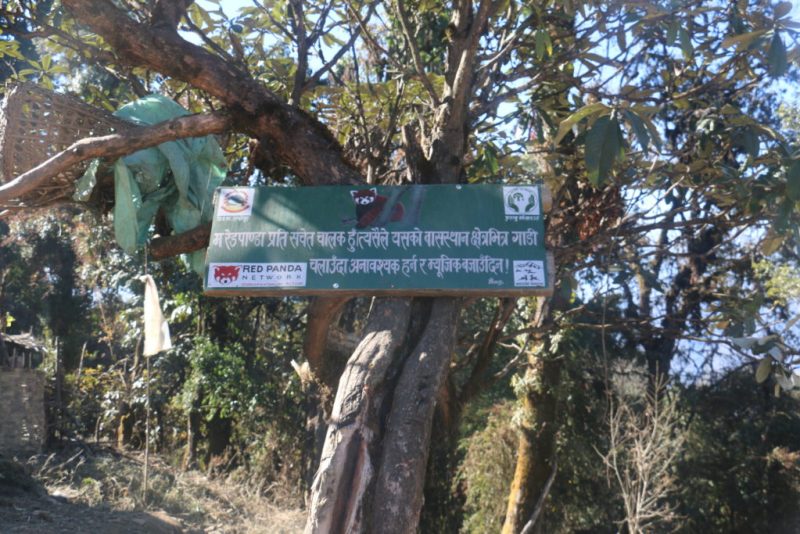
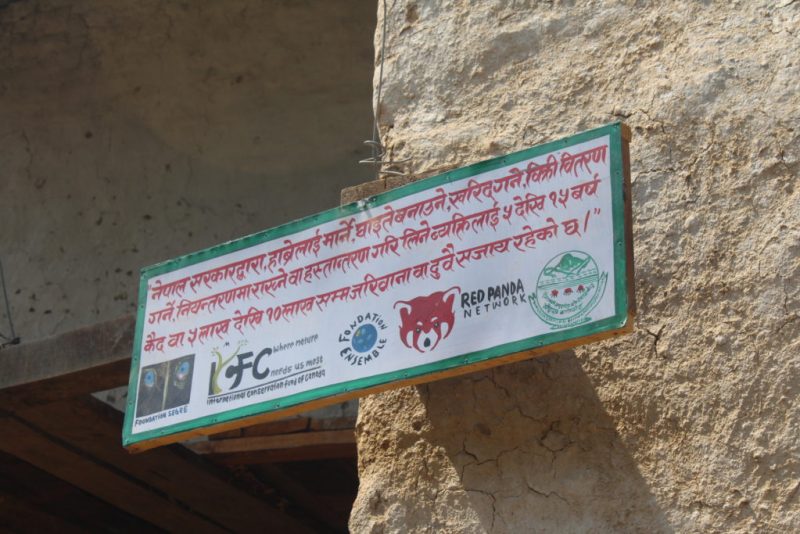
There are disasters that threaten the forests and biodiversity of red panda habitat in Nepal: wildfires. Earlier this year, a wildfire raged for sixteen days in the Pathibhara area of Taplejung district, destroying nearly 100 hectares of core red panda habitat in the Pathibhara Simbu, Sunpati, and Mayam Patal Community Forests. Another wildfire scorched parts of the Basapachal Jharna Community Forest of western Nepal’s Kalikot district. Research suggests that the lack of local awareness around fire prevention shares a role in this emerging threat.
One of our interventions was to work with respective Division Forest Offices and Community Forest members to install fire warning display boards in locations that are vulnerable to wildfire. The boards list prohibited activities and preventive measures to reduce the risk of wildfires; they also feature information on the causes and negative effects of wildfires on the local ecosystem and human communities.
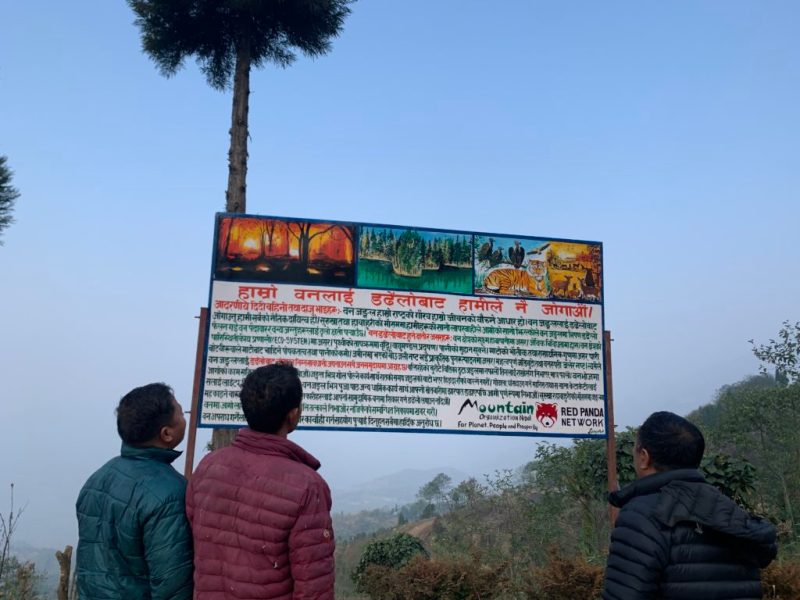
Monitoring and evaluating the efficacy of our outreach and education programs can be challenging. We attempt to measure the impact of our billboards through visitor experience and perceived attitude changes.
The billboards have also sparked opportunities to collaborate with companies and organizations who share similar visions —
“I traveled to Nepal in mid-2018 to visit and monitor a school-sponsored by Nature Planet. During the visit, a big billboard with a picture of a cute animal installed outside the airport of Jumla (RPN’s project area) caught our attention. Though I couldn’t understand the text crafted on the billboard, I was elated to see the logo of Zoo Leipzig, which happens to be a dear customer of Nature Planet. Along with it was the logo of RPN. I quickly Googled and the conservation interventions RPN have been putting forward looked interesting to me”, communicated Anne Dorthe Hjort of Nature Planet in an email to RPN staff.
Anne continues: “Cut to two years later, while we were looking for a partner to collaborate for a worthy cause, I remembered RPN and that's how we got connected. I am very happy we are starting this cooperation as I have a lot of love in my heart for Nepal, your nature, your kindness, and especially your children.”
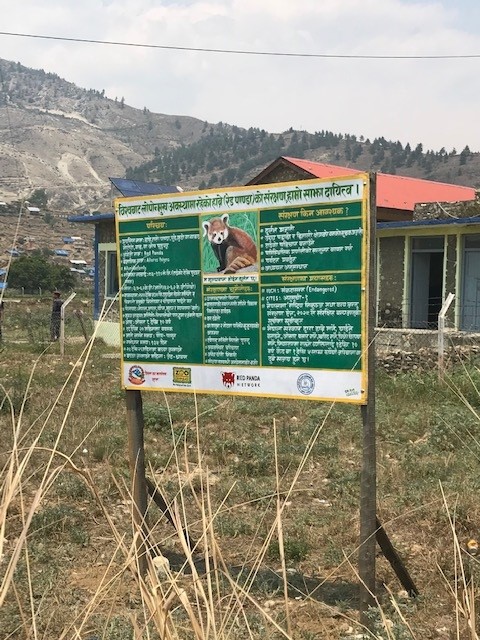
The conservation billboards are constructed using local and sustainably sourced materials and are hand-painted by local artists.
“Through the billboards, we’re able to extend conservation messages to a wider audience, and at the same time, mobilize local talents while creating alternative livelihood opportunities among native communities,” adds Sunil Bantawa.

